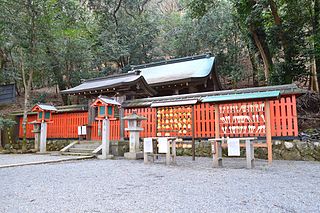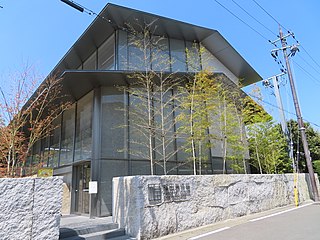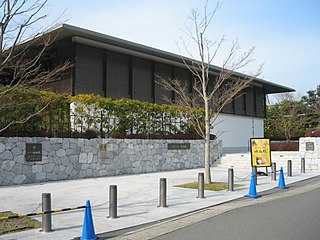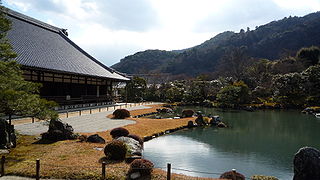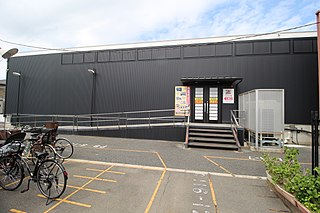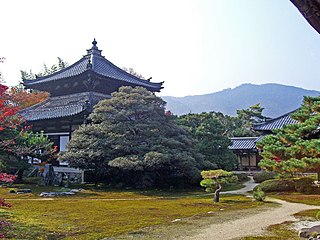Self-guided Sightseeing Tour #13 in Kyoto, Japan
Legend
Guided Free Walking Tours
Book free guided walking tours in Kyoto.
Guided Sightseeing Tours
Book guided sightseeing tours and activities in Kyoto.
Tour Facts
2.8 km
71 m
Experience Kyoto in Japan in a whole new way with our free self-guided sightseeing tour. This site not only offers you practical information and insider tips, but also a rich variety of activities and sights you shouldn't miss. Whether you love art and culture, want to explore historical sites or simply want to experience the vibrant atmosphere of a lively city - you'll find everything you need for your personal adventure here.
Activities in KyotoIndividual Sights in KyotoSight 1: Ichitani Munakata Shrine
Kashitani Munakata Shrine (櫟谷 Munakata Shrine) is a shrine located in Arashiyama Nakaoshitamachi, Nishikyo-ku, Kyoto, Japan. Two shrines, Kashiya Shrine and Munakata Shrine, are enshrined in one hall, and Kashiya is a Shikiuchi shrine, and now both companies together are the Setsha of Matsuo Taisha.
Sight 2: Fukuda Art Museum
The Fukuda Museum of Art is a private art museum located in Ukyo Ward, Kyoto City, Kyoto Prefecture.
Sight 3: Saga Arashiyama Museum of Arts and Culture
The Saga Arashiyama Museum of Arts and Culture is a museum in Arashiyama, Kyoto, Japan, centered on the Ogura Hyakunin Isshu anthology of waka poems compiled by Fujiwara no Teika in the 13th century. The museum was founded by former Nintendo president Hiroshi Yamauchi, who invested more than $20 million in the facility. Shigureden's Autumn Shower Palace hall was designed by Nintendo game producer Shigeru Miyamoto.
Sight 4: 宝厳院
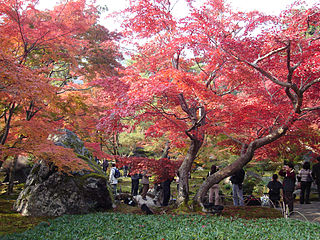
Hogon-in is a Rinzai sect temple located in Saga Tenryuji, Ukyo Ward, Kyoto City. It is a sub-temple of the main temple Tenryuji. The mountain name is Daigamezan, and the principal image is the Eleven-faced Kannon. The gardens and buildings are used for filming period dramas. Additionally, the term "aomomiji" originated from the "momiji" of the temple in early summer.
Sight 5: Tenryū Temple
Tenryū-ji (天龍寺), formally known as Tenryū Shiseizen-ji (天龍資聖禅寺), is the head temple of the Tenryū-ji branch of the Rinzai sect of Zen Buddhism, located in Susukinobaba-chō, Ukyō Ward, Kyoto, Japan. The temple was founded by Ashikaga Takauji in 1339, primarily to venerate Gautama Buddha, and its first chief priest was Musō Soseki. Construction was completed in 1345. As a temple related to both the Ashikaga family and Emperor Go-Daigo, the temple is held in high esteem, and is ranked number one among Kyoto's so-called Five Mountains. In 1994, it was registered as a UNESCO World Heritage Site, as part of the "Historic Monuments of Ancient Kyoto".
Sight 6: ジオラマ京都JAPAN
Diorama Kyoto Japan is a model railroad theme park located in Saga-Tenryuji, Ukyo-ku, Kyoto, Japan.
Sight 7: Rokuoin temple
Rokuoin is a single temple of the Rinzai sect located in Saga-Kitabori-cho, Ukyo-ku, Kyoto. The name of the mountain is Mt. Kakuo. The main Buddha is Buddha. Kaiki (founder) is Ashikaga Yoshimitsu, and Kaizan (the first Sumimochi) is Haruya Myotsu. It is a famous place for autumn leaves.
Share
How likely are you to recommend us?
Disclaimer Please be aware of your surroundings and do not enter private property. We are not liable for any damages that occur during the tours.
GPX-Download For navigation apps and GPS devices you can download the tour as a GPX file.
